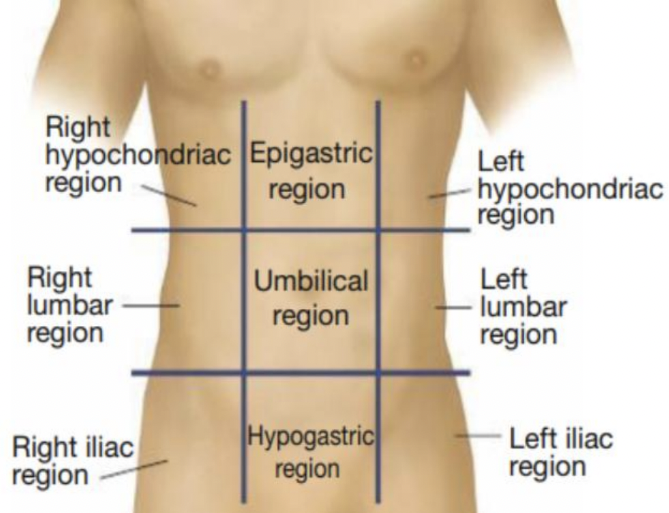2.2 Medical Terminology
1/21
Earn XP
Description and Tags
basic medical terms including body structure and function, disease processes, and abdominal regions.
Name | Mastery | Learn | Test | Matching | Spaced |
|---|
No study sessions yet.
22 Terms
Anatomy
The study of the structure of the body (how the body is built)
Physiology
The study of the functions of the body (how the body works)
Homeostasis
The process of maintaining internal stability
Disease
Failure to maintain homeostasis for any reason
Pathology (path)
The study of disease (origin, nature and course of diseases)
Diagnosis (DX/dx)
Identifying an illness
Prognosis
Predicting the probable course of the disease and its probable outcome
Sign
Objective evidence of disease; for example, blood pressure and temperature
Symptom
Subjective evidence of disease; for example, pain, or loss of appetite
Acute
Condition that has a rapid onset, sharp effects and short duration
Chronic
Condition that has a slow onset, mild symptoms and long duration.
Inflammation
The body’s response to injury or destruction of tissues (Key indicators: redness, swelling, heat and pain)
Infection
One of the most common forms of disease caused by microorganisms such as bacteria and viruses
Trauma
A physical or psychological injury (e.g., a head wound or emotional stress after an accident)
Treatment
Medical care given to a patient for an illness or injury
Remission
Temporary disappearance of the symptoms and signs of a disease.
Where is Epigastric region
On top of the stomach
Where is Umbilical region
Pertaining to the navel
Where is Hypochondriac region
Below the ribs
where is Lumbar region
Pertaining to the loin (part of the body on both sides of the spine)
where is Iliac region
Pertaining to the hip

memorize the regions and its names
memorize it